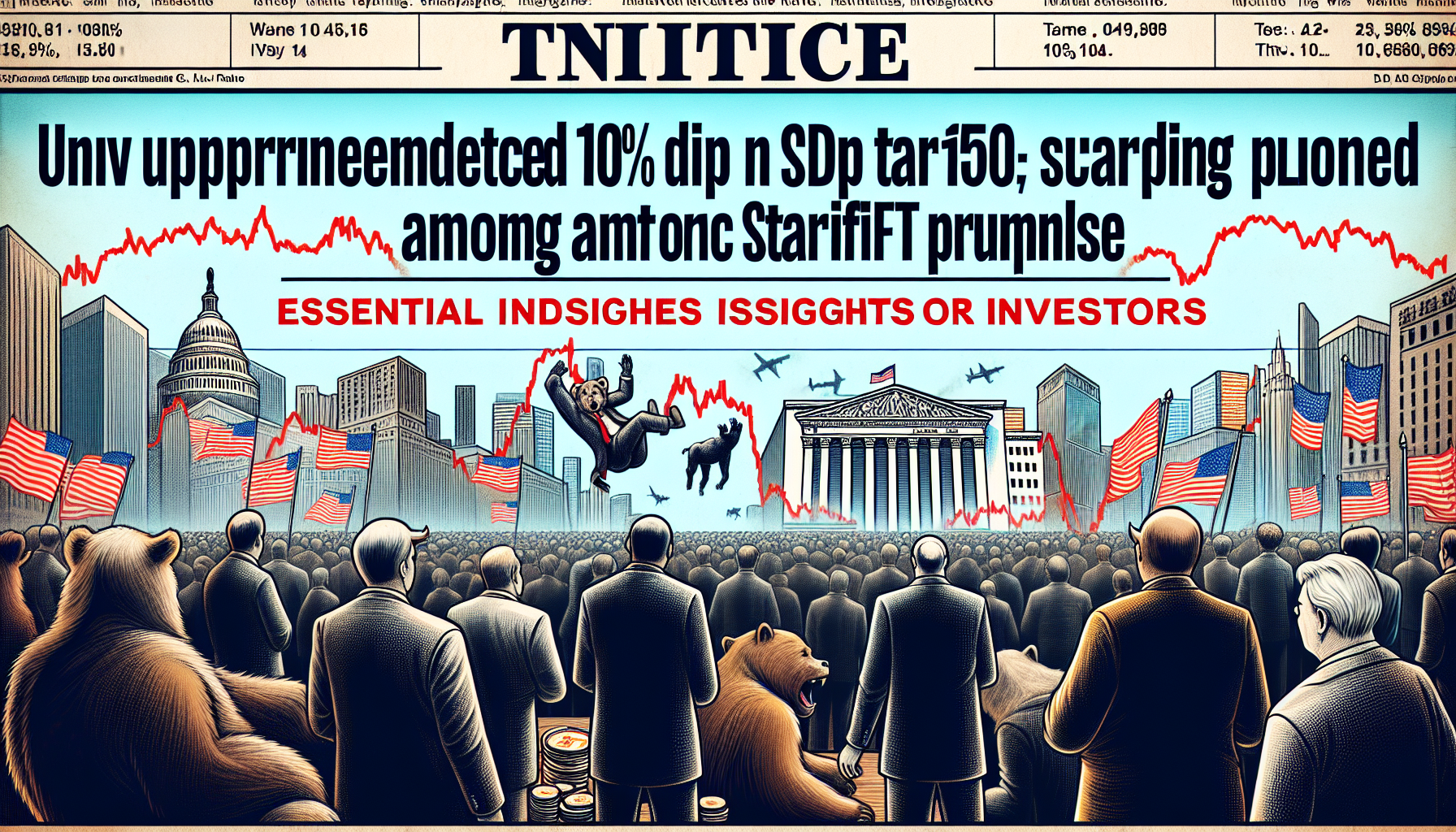The S&P 500's Historic 10% Collapse: Analyzing Trump's Tariff Shock and Market Reactions
The S&P 500 experienced one of its most dramatic two-day drops in history, plummeting 10% following former President Donald Trump's unexpected tariff announcements. This sharp decline ranks among the deepest market corrections ever recorded, sending shockwaves through global financial markets. Investors scrambled to reassess risk, leading to heightened volatility and widespread uncertainty.
Understanding the Tariff Shock and Its Immediate Impact
Trump's proposed tariffs targeted key trading partners, reigniting fears of a global trade war. The market's reaction was swift and severe, reflecting concerns over:
- Corporate Earnings: Higher tariffs could squeeze profit margins for multinational companies.
- Supply Chain Disruptions: Businesses reliant on imported goods faced rising costs.
- Consumer Prices: Inflationary pressures from tariffs threatened purchasing power.
Within hours, major indices saw massive sell-offs, with the S&P 500 leading the decline. Analysts compared the drop to other historic crashes, such as the 2008 financial crisis and the 2020 COVID-19 market crash.

How This Collapse Compares to Past Market Crashes
The S&P 500's 10% two-day drop places it among the most severe corrections in history. Other notable crashes include:
- Black Monday (1987): A 20% single-day plunge due to program trading and panic selling.
- 2008 Financial Crisis: A prolonged bear market triggered by mortgage defaults.
- COVID-19 Crash (2020): A 12% single-day drop as pandemic fears gripped markets.
Unlike these events, Trump's tariff shock was policy-driven, meaning future market movements could hinge on political developments rather than economic fundamentals.
Investor Sentiment and the Fear of a Looming Recession
For two years, markets had braced for a recession that never materialized. However, the tariff announcement abruptly shifted sentiment, with traders pricing in a higher probability of an economic downturn. Key indicators reflecting this shift included:
- Bond Yields: A sharp drop in Treasury yields signaled a flight to safety.
- VIX Surge: The volatility index spiked as fear dominated trading.
- Sector Performance: Defensive stocks outperformed cyclical sectors.
This rapid repricing demonstrated how quickly investor confidence could erode in response to geopolitical risks.

Market Recovery Prospects and Key Factors to Watch
Whether the S&P 500 rebounds or extends its losses will depend on several critical factors:
- Policy Reversals: If tariffs are scaled back, markets may stabilize.
- Corporate Guidance: Earnings forecasts will reveal tariff impacts.
- Fed Response: Potential rate cuts could provide relief.
Historically, markets have recovered from steep drops when underlying economic conditions remain strong. However, prolonged trade tensions could delay a rebound.
Conclusion: What This Means for the Market in the Coming Weeks
The S&P 500's dramatic decline underscores the fragility of investor confidence in the face of geopolitical risks. In the short term, markets may remain volatile as traders assess the likelihood of further tariff escalations. If tensions ease, a rebound is possible, but continued uncertainty could prolong the downturn. Investors should monitor:
- Trade Negotiations: Any signs of de-escalation could boost stocks.
- Economic Data: Weakness in jobs or GDP may reinforce recession fears.
- Fed Policy: Dovish signals could provide a floor for equities.
For now, caution is warranted, but opportunities may emerge for long-term investors if valuations become more attractive.

